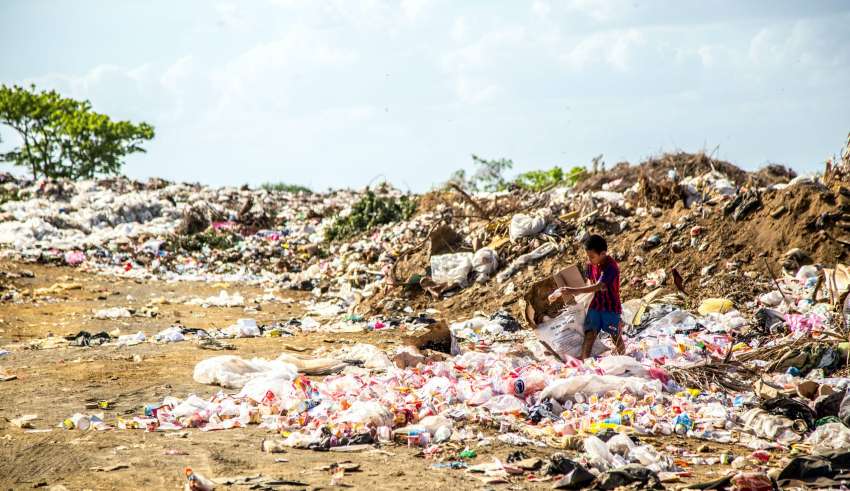
- Plastic Pollution from Apparel: The global apparel industry generated an estimated 8.3 million tons of plastic pollution in 2019, accounting for 14% of the total plastic pollution from all sectors.1
- Synthetic Clothing Dominance: Synthetic Clothing as the Main Culprit: Synthetic apparel contributes 7.4 million metric tons of plastic pollution annually, primarily through macroplastic waste at the end of its life cycle, while microplastic shedding during laundering and wear accounts for 1.5% of the total.1
- Global Impact: Much of the synthetic apparel causing plastic pollution is exported from high-income countries to secondary markets with inadequate waste management systems, shifting the environmental burden.1
A fundamental shift towards a circular economy and reduced synthetic apparel consumption is essential to mitigate the industry’s plastic pollution impact. Please visit Cotton Today to learn more about this research.
In my role as vice president and chief sustainability officer at Cotton Incorporated, I have had the privilege of leading initiatives that address some of the most pressing environmental challenges in the apparel industry. Among these challenges, perhaps none is as urgent or pervasive as the issue of plastic pollution.
The issue of single-use plastic is well known. Single-use plastics, such as straws, water bottles, shopping bags, and packaging, have garnered significant public attention due to their detrimental environmental impact. Many individuals make efforts to minimize their plastic consumption by opting out of using these, favoring reusable alternatives instead. It’s crucial to also consider the less obvious forms of plastic—often unseen or unnoticed in our daily lives—such as those stemming from our clothing.
The global apparel industry is a significant yet overlooked source of plastic pollution. Each year, the industry contributes an estimated 8.3 million tons of plastic waste annually, primarily from synthetic clothing, which sheds microplastics during laundering and releases macroplastics at the end of its life cycle. Macroplastic is a relatively new word to describe larger pieces of plastics, such as a polyester t-shirt that ends up as waste on the ground. Despite efforts to address plastic pollution in sectors like packaging and consumer goods, the impact of synthetic fibers from apparel remains a critical environmental concern. Addressing this issue requires concerted efforts across the apparel supply chain to reduce plastic use, improve recycling technologies, and promote sustainable alternatives like using natural fibers such as cotton.
Cotton Incorporated, along with other leading researchers, recently published a groundbreaking study in Nature Communications related to this issue. The study underscores Cotton Incorporated’s crucial role in assisting the apparel industry with research and promoting sustainability solutions.
Our research reveals that synthetic clothing contributes approximately 7.4 million metric tons of plastic pollution annually, primarily as macroplastic waste when these garments reach the end of their life cycle.1 This compounds the well-documented issue of microplastic shedding during laundering and daily wear. By highlighting these findings, Cotton Incorporated aims to foster greater awareness and collaboration across the apparel supply chain to implement sustainable practices and reduce the environmental impact of apparel.
Understanding the Scale of the Problem
Plastic pollution from the apparel industry is multifaceted, involving packaging, end-of-life apparel waste, and fiber emissions during production and use. In 2019, the industry generated an estimated 8.3 million tons of plastic pollution, approximately 14% of the 60 million tons from all sectors. This plastic weight is equivalent to 820 times the weight of the Eiffel Tower, more than 23 times the weight of the Empire State Building, and almost 9 times the weight of the Golden Gate Bridge. This substantial contribution is mainly due to inadequate synthetic garment collection and treatment after disposal.
The alarming truth is that synthetic apparel waste, if not managed properly, becomes a significant contributor to macroplastic and microplastic pollution. Microplastics, defined as plastics less than 5 mm, are particularly concerning. Fiber shedding during the laundering of synthetic textiles represents a substantial portion of primary microplastic emissions into waterbodies.
The Invisible Threat: Microplastics
Microplastics receive widespread attention due to their pervasive presence in waterbodies, food, and even in the human body. Recently, microplastics have been found in human blood and in our reproductive organs.123456 However, the full picture includes unquantified microfiber emissions to the air from wearing and drying clothes, adding another layer to the pollution puzzle.
Moreover, the growing demand for fast fashion exacerbates the issue. Increased per capita sales and the doubling of clothing production over the last 15 years have led to significant plastic leakage.7 This leakage includes littering, illegal dumping, and inadequately managed landfills, contributing to the ongoing environmental degradation.

























